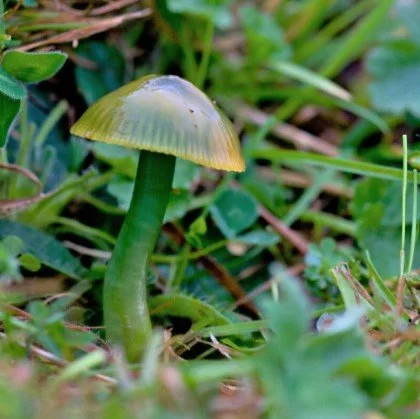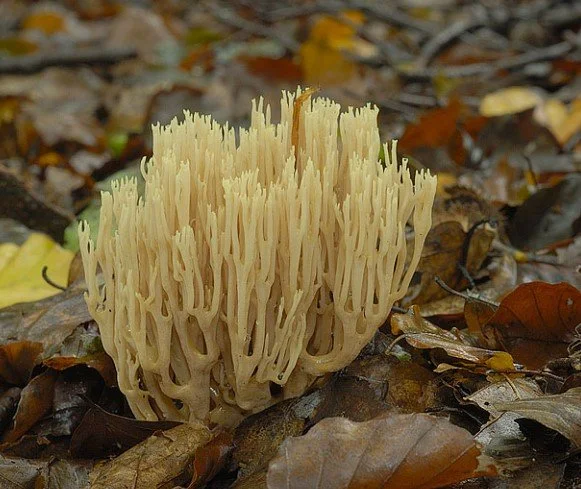October’s Garden Update
Soft Days
Mushrooms
Overnight, very
Whitely, discreetly,
Very quietly
Our toes, our noses
Take hold on the loam,
Acquire the air.
Nobody sees us,
Stops us, betrays us;
The small grains make room.
Soft fists insist on
Heaving the needles,
The leafy bedding,
Even the paving.
Our hammers, our rams,
Earless and eyeless,
Perfectly voiceless,
Widen the crannies,
Shoulder through holes. We
Diet on water,
On crumbs of shadow,
Bland-mannered, asking
Little or nothing.
So many of us!
So many of us!
We are shelves, we are
Tables, we are meek,
We are edible,
Nudgers and shovers
In spite of ourselves.
Our kind multiplies:
We shall by morning
Inherit the earth.
Our foot's in the door.
Sylvia Plath
It happened some time around the 24th, the tangible shift in the temperature of the light. I can see it change as I scroll back through my camera roll, from bluebird days to slanting shafts that slice over the top of the wall to ignite everything they touch. September is a month of extraordinary light, when work is a joy and - as Olivia Lang writes in the brilliant The Garden Against Time - time drips like honey from a spoon. Along with the sun came rain in myriad forms from pummelling, twisting cables that made a river of the shed to the kind of persistent fine drizzle that soaks you quicker than any downpour. I recently learned that in Ireland, you might describe a day of drenching mist as a ‘soft day’ and follow it with ‘thank God’ to give thanks for the kind of singular beauty that brings.
Possibly as a result of the damp, I’m seeing lots of mushrooms in the garden, some of which have to be seen to be believed. There is Ramaria stricta (upright coral fungus) resembling a tiny but fantastical pipe organ; Crucibulum laeve that is a dolls-house-sized facsimile of a bird’s nest replete with tiny white eggs and the brilliantly named dead man’s fingers which looks exactly how it sounds - poking through the leaf litter like something from a horror film. Less repellent is the amethyst deceiver (Laccaria amethystina) which is the colour of parma violets, and the parrot waxcap which is the exact same emerald green as the turf it emerges from. Something I had noticed but never thought about until this year is a fungus called Monilinia fructigena which is the main causative agent of brown rots in apples and pears, and I’ve been looking closely for the first time at its velvety white tufts spreading over the surface of the fruits in concentric circles.
The rains have also made a nice damp bed for the new herbaceous perennials we’re planting out, to fill the gaps left by removal of Campanula lactiflora. These are all intended to give an injection of late season colour into a key border, and the list of cultivars is below in case you are interested:
Aconitum carmichaelii (Arendsii Group)
x Alcalthea suffrutescens ‘Parkallee’
Symphyotrichum ‘Little Carlow’
Eryngium x oliverianum ‘Big Blue’
Hesperantha coccinea ‘Wilfred H. Bryant’
Leucanthemum x superbum ‘Sonnenschein’
Salvia ‘Blue Spire’
Rudbeckia fulgida var. sullivantii ‘Goldsturm’
Hylotelephium telephium ‘Strawberries and Cream’
Hylotelephium x mottramianum ‘Herbstfreude’
Sidalcea ‘Elsie Heugh’
Solidago ‘Goldenmosa’
We’ve also been pulling together some pots with a mix of things that flower through autumn and winter, stay evergreen or have nice autumn colour, or just die back nicely. This year that’s violas, grasses, Japanese anemones, dwarf chrysanthemums, heathers and Sorbraria which we’ll swap out with tulips when the time comes. Speaking of bulbs, we’ve potted up lots of paperwhites and amaryllis to sell at the Rosemains Christmas Market on 29th November. Between now and then we’ve got lots of work to do in the garden, including removing an old rock garden that has been completely swamped with couch grass and thistles, and believe it or not there are yet more apples to collect. For the last week we’ve been carefully rationing the one trug we have left and picking our way through the shed to get to tools and the potting bench, and so it’ll be a relief when they go off to be made into apple juice, along with the pears and grapes. We’ve been picking through them periodically to check for rots, in the hope that the juicer gets them before Monilinia fructigena does.
Kate



